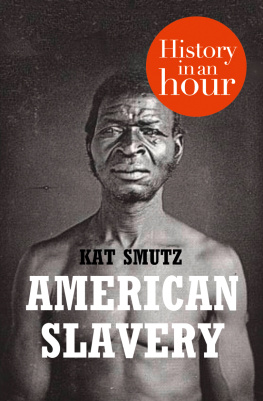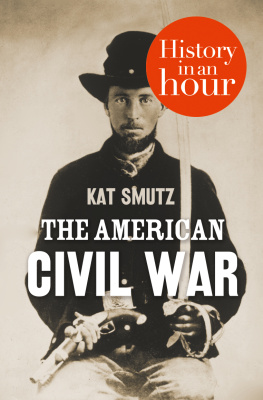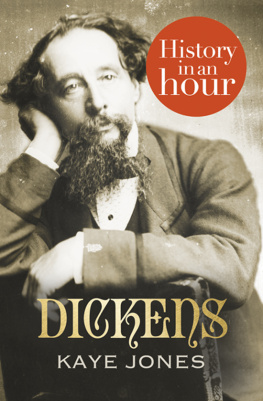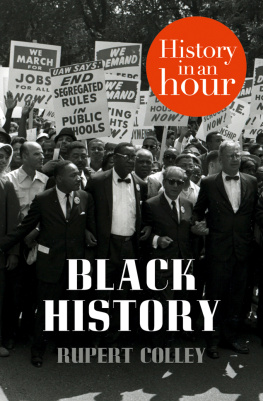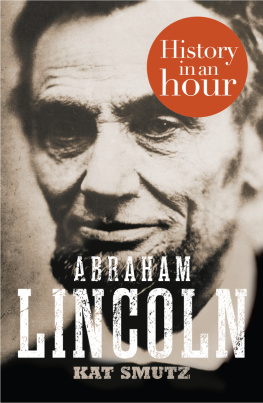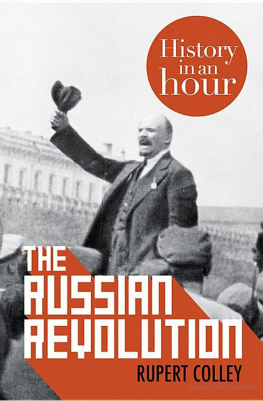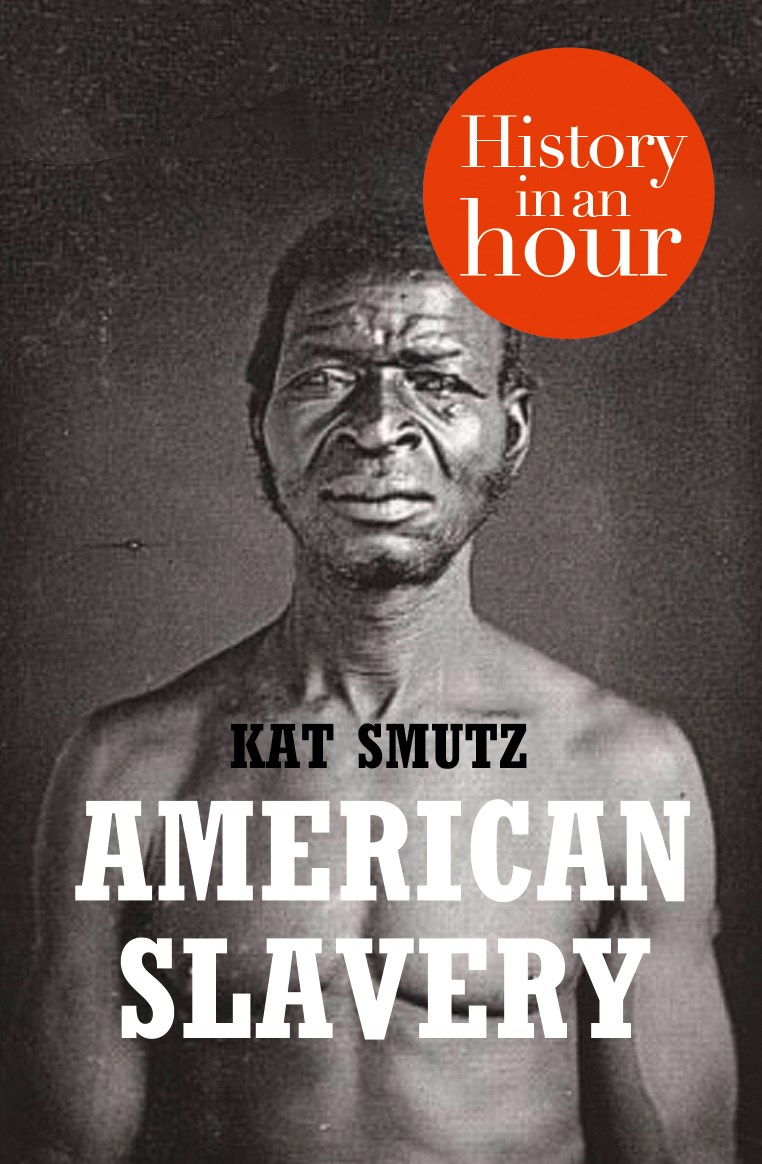
AMERICAN SLAVERY
History in an Hour
Kat Smutz

History in an Hour is a series of ebooks to help the reader learn the basic facts of a given subject area. Everything you need to know is presented in a straightforward narrative and in chronological order. No embedded links to divert your attention, nor a daunting book of 600 pages with a 35-page introduction. Just straight in, to the point, sixty minutes, done. Then, having absorbed the basics, you may feel inspired to explore further.
Give yourself sixty minutes and see what you can learn
To find out more visit: http://historyinanhour.com or follow us on twitter: http://twitter.com/historyinanhour
Contents
When the first African slaves arrived in North America, there were no states to unite, much less a United States. There was only Jamestown, and the only form of slavery was indenture. As more and more colonists arrived, and as the country grew and spread and evolved, so did the institution of slavery. Along with it came a division in Americas way of thinking. While some became more and more reliant upon what became known as our peculiar institution, others began to question the morality of slavery. By the time Thomas Jefferson drafted the Declaration of Independence, slavery was a practice that was beginning to draw more and more attention. In the North, states would begin to outlaw slavery one by one, as the agrarian South would become more and more dependent upon it. And as the country expanded towards the west, Americans lawmakers would be faced with the task of determining how to go about adding new states, and how to determine if those states could or could not own slaves.
Meanwhile, the rights of slaveholders would overshadow the barbarity of slavery and those who opposed slavery would thumb their noses at the law in order to assist fugitive slaves along the famous Underground Railroad.
Controversy would turn to violence and resentment would smolder until the election of a president who openly opposed slavery fanned the embers into the flames of war. Less than one hundred years after fight for freedom from Great Britain, the enslavement of African-Americans would grow into a controversy that would divide the United States and threaten to tear the fledgling nation asunder.
This, in an hour, is American Slavery.
In 1492, an explorer from Genoa in Italy named Cristoforo Colombo, better known as Christopher Columbus, proved that the ocean did not spill over the western horizon into an endless chasm of space, as had previously been assumed. Instead, he found land, untouched, brimming with resources, and filled with potential for expansion and profit. He soon established a colony on the island of Hispaniola, where sugar cane proved a profitable crop. But it was a crop that was labour intensive and men were needed to work the fields. The colonists, who had claimed the islands in the Caribbean as their own, reached out to the Portuguese who, in their travels along the west coast of Africa during the fifteenth century, had been buying Africans as slaves, shackling and transporting them across the world.

Christopher Columbus, painting by Sebastiano del Piombo
The European superpowers of the day England, Spain, France, Portugal and Dutch (as Germany was informally known at the time) all began to covet this new land, this new place, this New World and its potential for profit. Some were financially bankrupt from years of war, ill-advised spending, or both, and they sent expeditions funded by European backers to explore the New World, looking for everything from natural resources to legendary cities filled with treasure. They found a land that seemed limitless in its potential to bring financial gain to their backers, as well as expansion and power for their rulers. Soon, the European superpowers realized that to hold on to their claims in the New World, they needed more than profiteering expeditions. They needed colonization.
There were those who were willing to risk the long sea voyage for the chance to carve out a new life in a new land. But once they arrived they discovered that the dangers did not end at the shoreline, and even the most experienced of the early colonists found it difficult, sometimes impossible, to overcome the hardships of carving a civilization out of nothing. The place was inhabited by natives whose prior claim was ignored and who sometimes took exception to their new neighbours. There were beasts that were unknown in Europe, strange diseases, unexpected weather and any number of other dangers. Taming the New World, even a small portion of it, was not for the faint of heart.
In Britain alone there were any number of reasons why someone would risk so much to find a new home. By law, a familys wealth was left to the eldest son, leaving younger siblings to make their own way. There were those who had gained fortunes and lost them, and there were those who were never satisfied to sit quietly while there was an adventure to be found or a challenge to be wrestled into submission. Some saw an opportunity to find something money could not buy in any country religious freedom. Others were simply desperate to find a way out of poverty, prison, or both.
To help encourage colonization, Britains first colony in Virginia promised land to anyone importing more colonists. The headright system offered fifty acres of land per person to anyone bringing a new resident to the colony. It was an enticing incentive and finding the people to import was easy. There were those who could afford to pay passage for other colonists and those who were willing to make the trip, but who lacked the money for their passage. All that was needed was a way to bring the two together.
And so a system called indenture came into practice. An indentured servant was a person, male or female, who agreed to a term of service in exchange for passage to the New World. Those who didnt have the money for the trip could earn it over time, and those who provided the funds had someone to work the extra land awarded by the headright system. By the time most indentured servants had completed their term of service, they had learnt a skill that would earn them a living or, in the case of women, they were then free to marry. People who were willing to indenture themselves were not difficult to find. However, indentured servants would not be the only way bondage found its way to the New World.
In Africa, men, women and children were taken captive in battle or in raids by enemy tribesmen and marched to the west coast. It was only the first leg of what would be a long journey, a voyage that would end in a lifetime of slavery. In between was a crossing over the Atlantic Ocean known as the Middle Passage.
Spanish explorers were the first to bring Africans on their explorations to the New World some as slaves, some as free men and as colonization grew and as the Spanish began to establish plantations in the Caribbean, they would bring African slaves to the New World as permanent residents. In 1501, the first African slaves arrived in Santo Domingo in the Dominican Republic. The islands of the Caribbean were proving to be an excellent environment for the production of sugar cane and soon other European countries had established their own colonies.
Demand for labour to work the vast fields that rolled across the islands like a green continuation of the ocean itself grew, and African slaves seemed suited to the harsh labour. They worked in brutal conditions that included extreme heat, humidity, and were plagued by poisonous insects, venomous snakes, and tropical diseases. Compared to other races, the Africans seemed to have a higher tolerance for the extreme conditions in the sugar cane fields. That was the commonly accepted theory at the time. Whether fact or fiction, as African slavery moved from the Caribbean to the North American mainland, that mentality followed.
Next page
